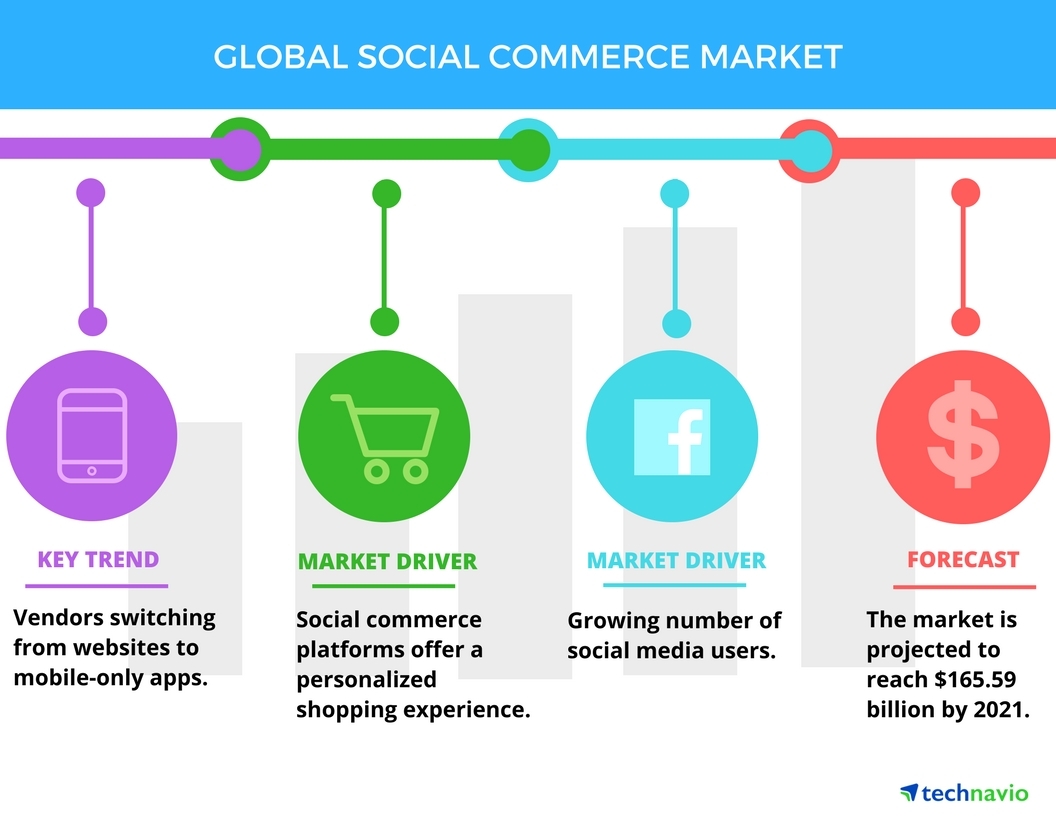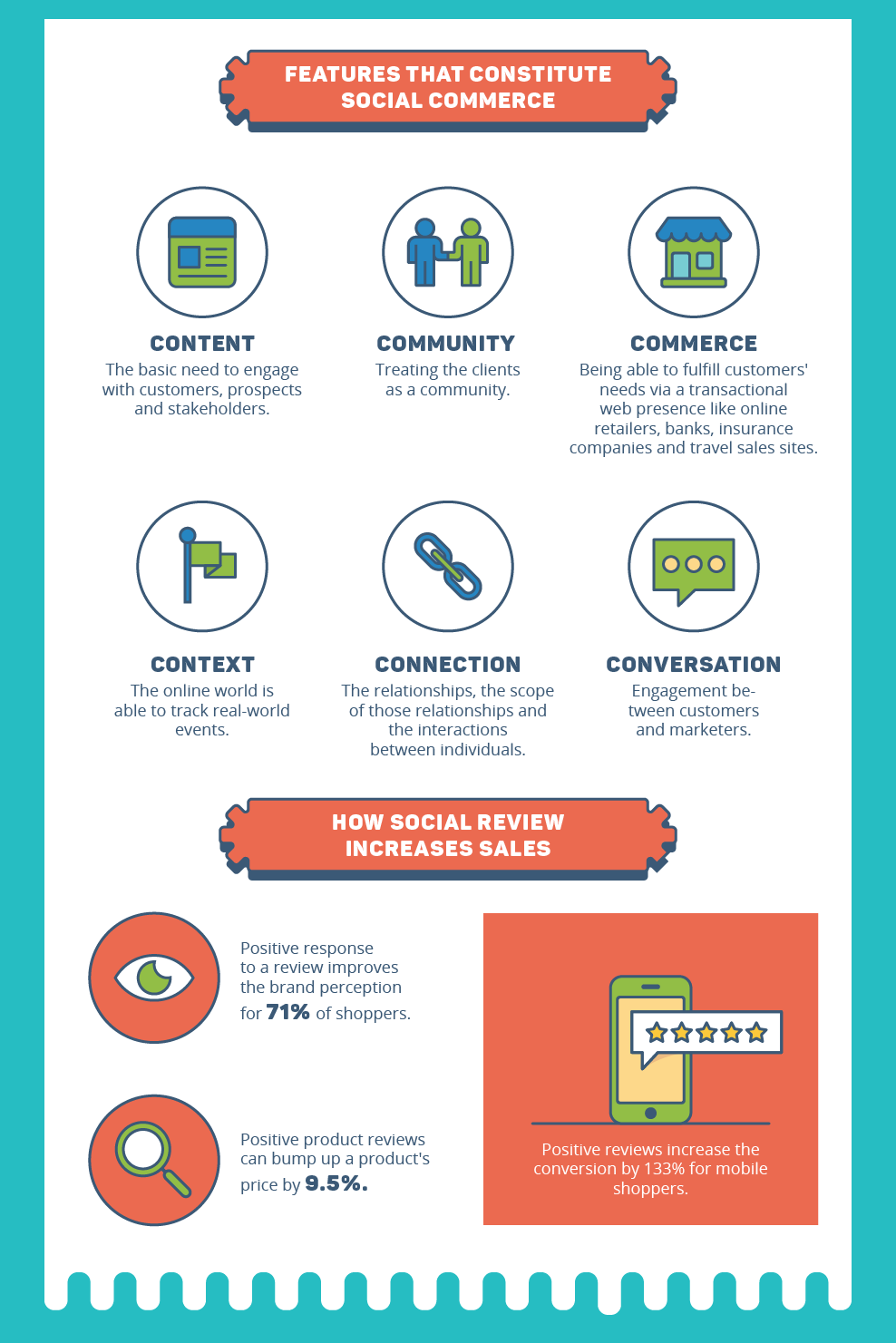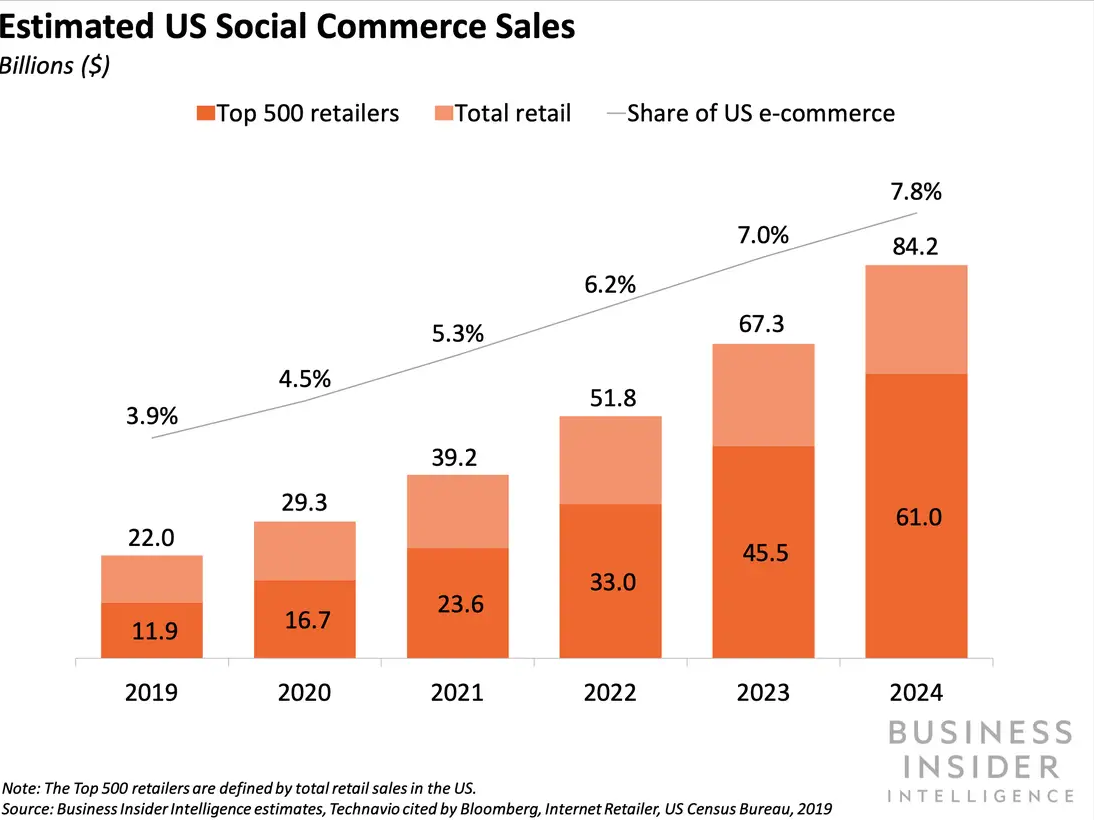February 8, 2020
The Key Components of Social Commerce

Yahoo was the first to coin the term “social commerce” back in 2005. Then, the landscape of purchasing was beginning to shift thanks to the mechanics of the internet. Collaboration, communication, and social interaction blossomed in the digital space. The opportunities to buy and sell were growing by the minute.

Thus, this was the age in which the concept of social commerce was born. In other words, selling through social channels in a spot most convenient for consumers. After all, they’re hanging out there anyways. All a brand simply needs to do is elbow in a little room and speak authentically.
Measuring Social Commerce
Measuring social commerce is done the same way you would measure any social media activity. The principle ways to gauge your efforts include:
- Return on Investment: Clearly the most obvious goal, this measures the effect your social actions have on sales.
- Reach: These metrics employ traditional media advertising to measure rates of exposure and audience levels.
- Reputation: This looks at the influences of social media and the changes in online reputation. It’s made up of valence and a volume of social media mentions.
The Primary Elements of Social Commerce
There are many components to a robust social commerce system. This includes elements like:
Community
Community is about a group of people who share the same values, beliefs, likes, etc. When people are accepted into a community, they feel a level of commitment. If this happens, they tend to follow the same trends as a group. When one member introduces an idea or product, it’s more readily accepted.
Reciprocity
This is when a business gives a person something for free and asks for a favor in return. If they are satisfied, this is generally a good review online to boost reputation. However, it is only a request. A requirement would be illegal (false advertising).
Authority
People need proof a product and/or service is of good quality. This proof can be based on recommendations from other buyers. The more positive reviews, the more authority a brand has online. People need this trust to purchase.
Social Proof
To position an effective front, a business must be able to address comments and reviews of all sorts. A company should be willing to receive social feedback and show proof that the people buying the product/service are happy.
This is your social proof that motivates others to buy through the same channels. After all, 55% of buyers turn to social media before they purchase something.
Scarcity
An old fashioned trick of the trade is creating a sense of urgency for products. A greater value is always assigned to a product in high-demand (or items that are short on inventory). If a person is convinced they are purchasing something unique or special, they are more willing to buy. Especially if it’s something not easy to acquire.
If trust is established through the brand, people will want to buy these items immediately. This is done by convincing the population a product is scarce or about to run out.
Not sure how it works? Look at the brand Apple. They have a new iteration of the iPhone every five minutes that people “must-have.”
Liking
If your posts have a lot of likes, people pay attention. This makes the consumer more confident in what you are selling and creates a sense of trust. It justifies the purchase in their mind. The same goes for comments. The more positivity being shared, the more curious people will become.
The trick to succeeding with social commerce is authenticity and trust. The truer you are to the message and solving a problem, the more likely people will buy and recommend the brand to others.










